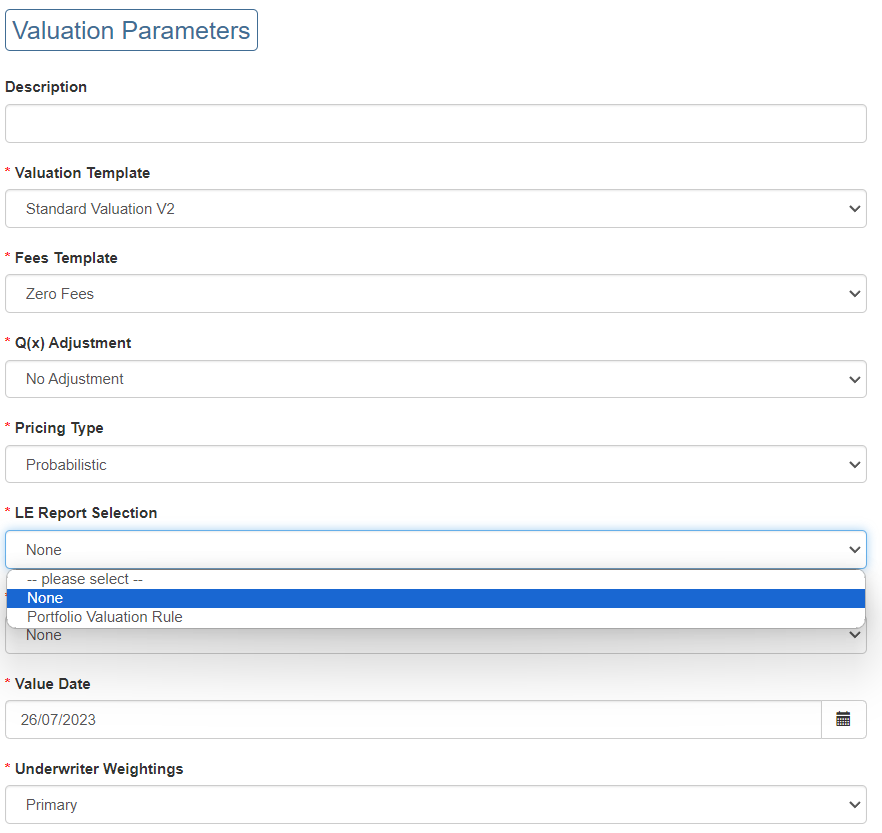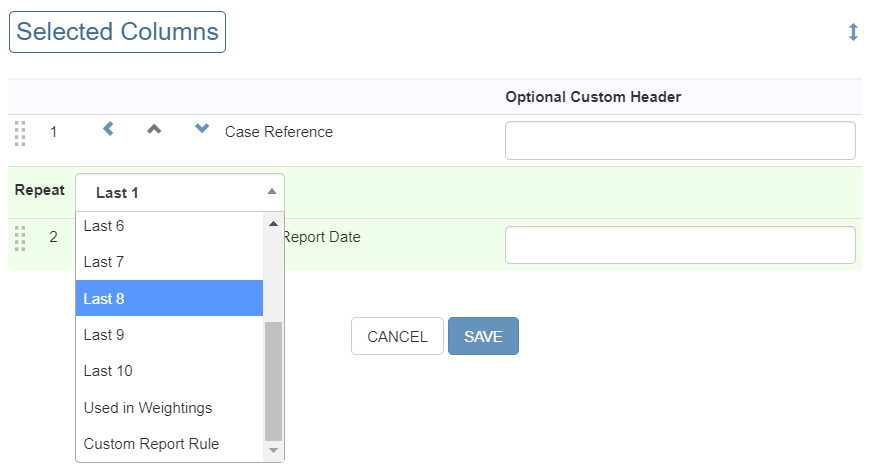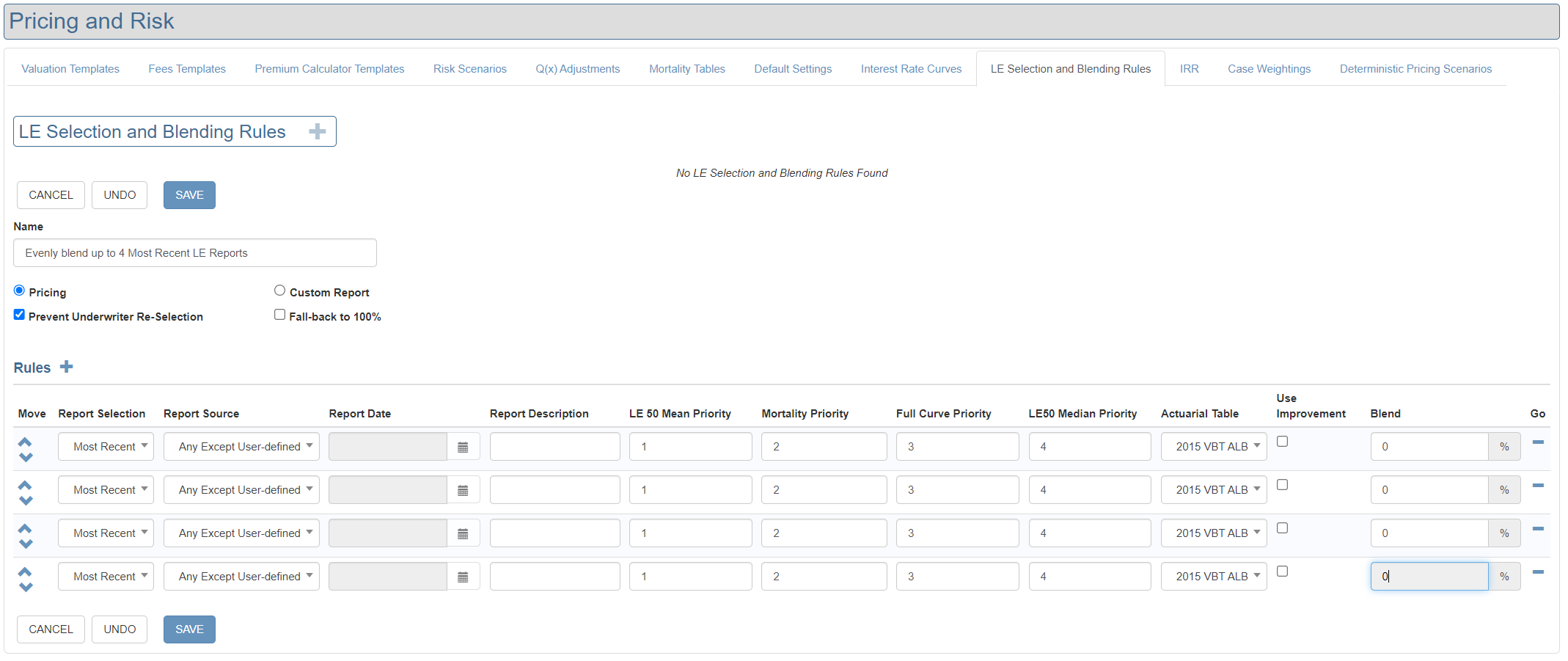LE Selection and Blending Rules
Overview
ClariNet LS supports dynamic selection and blending of LE reports when valuing a Portfolio and when using Custom Reports. This feature is accessed here:

Use of Rules
Rules can be used in Portfolio Valuation:

And in Custom Reporting:

Creating Rules
Basic Settings

Pricing/Custom Report
This selection determines how the rule is specified and where the rule will appear (see Use of Rules).
Prevent Underwriter Re-Selection
If this checkbox is ticked, ClariNet LS will prevent multiple reports from the same underwriter being used in the selection. This deals with the situation where your two most recent reports are from AVS and you want to select AVS plus the most recent other underwriter.
Fall-back to 100%
If this checkbox is ticked and there are insufficient LE reports to satisfy the blends specified, ClariNet LS will fall-back to 100% of the first report selected. An example of where this is useful is if you have a portfolio consisting mostly of cases with AVS and 21st reports, but some of the cases only have an AVS report. You can select a 50/50 blend of AVS/21st and by checking this box, the cases that only have an AVS report, will still be priced just using the AVS report.
Individual Rules (Pricing)

This follows the blending rules from the Valuation Settings tab at Case level, with some enhancements. Rules can be added to the table by clicking the Add icon at the top of the table. The rules are then applied to each Case in the Portfolio based on their order in the table (which can be adjusted using the arrows in the Move column). In the example above, the most recent report from AVS is used first – if that is not available, the most recent report from Fasano is used. Note that in this example, no value is selected in the Blend column – if a value is entered in the Blend column, then each LE Report with a Blend is selected together (rather than following the order in the table).
Report Selection
- Highest Mortality Factor
- Longest Mean LE50
- Longest Median LE50
- Lowest Mortality Factor
- Most Recent
- Most Recent After Specified Date
- Most Recent Before Specified Date
- Most Recent On or Before Value Date
- Shortest Mean LE50
- Shortest Median LE50
If "Most Recent Before Specified Date" is selected, a calendar tool allows you to select the date after which LE reports will be ignored.
Report Source
- Each specific underwriter
- Any
- Any Except User Defined
- User Defined
Report Date
If “Most Recent After Specified Date” or “Most Recent Before Specified Date” are selected, the reference date is specified here.
Report Description
If "User Defined" is chosen, the Report Description field acts as a filter (if specified) so that only User Defined Reports matching the description will be selected.
Priority
The text boxes for LE50 Mean, Mortality Factor, Full Curve and LE50 Median determine which data point is used from the LE Report, in the specified order of priority. Only boxes that have a value are considered for selection (e.g., if you leave Full Curve blank that data point from the report will never be used).
Mortality Table, Use Improvement, Blend
These have the same function as before.
Examples
Blend 70% of the longest LE50 mean with 30% of the shortest LE50 mean from any public underwriter

50/50 Blend of AVS and Fasano (using latest report from each)

Zero Weighting Rules
You can use zero as the weighting to indicate ClariNet should evenly blend as many LE reports as it can match according to the rules.
In this example, ClariNet will try to select 4 reports and evenly weight as many as it can. It will only select a given underwriter once.

Rules with no Weighting Specified
If you specify no weighting, the first match that is found will be weighted 100%.

In this example, if an AVS report is found, it will be weighted 100%, otherwise a Fasano report will be weighted 100%.
